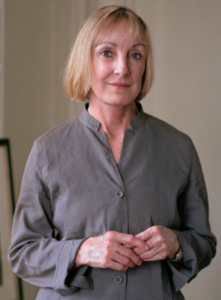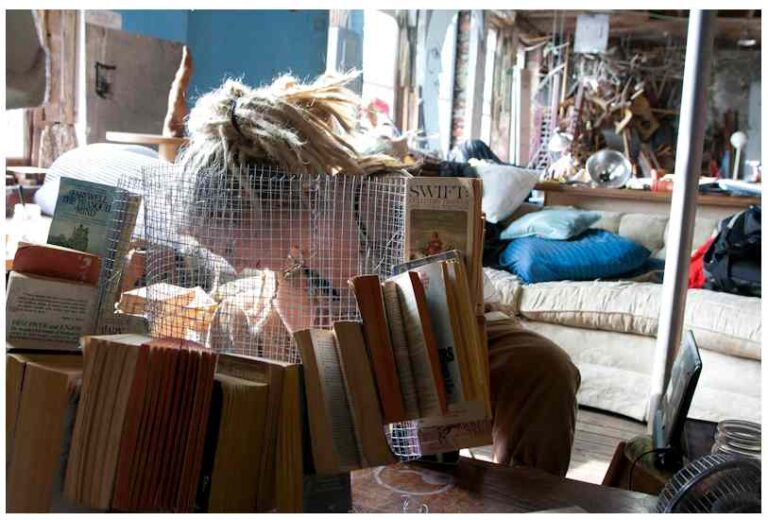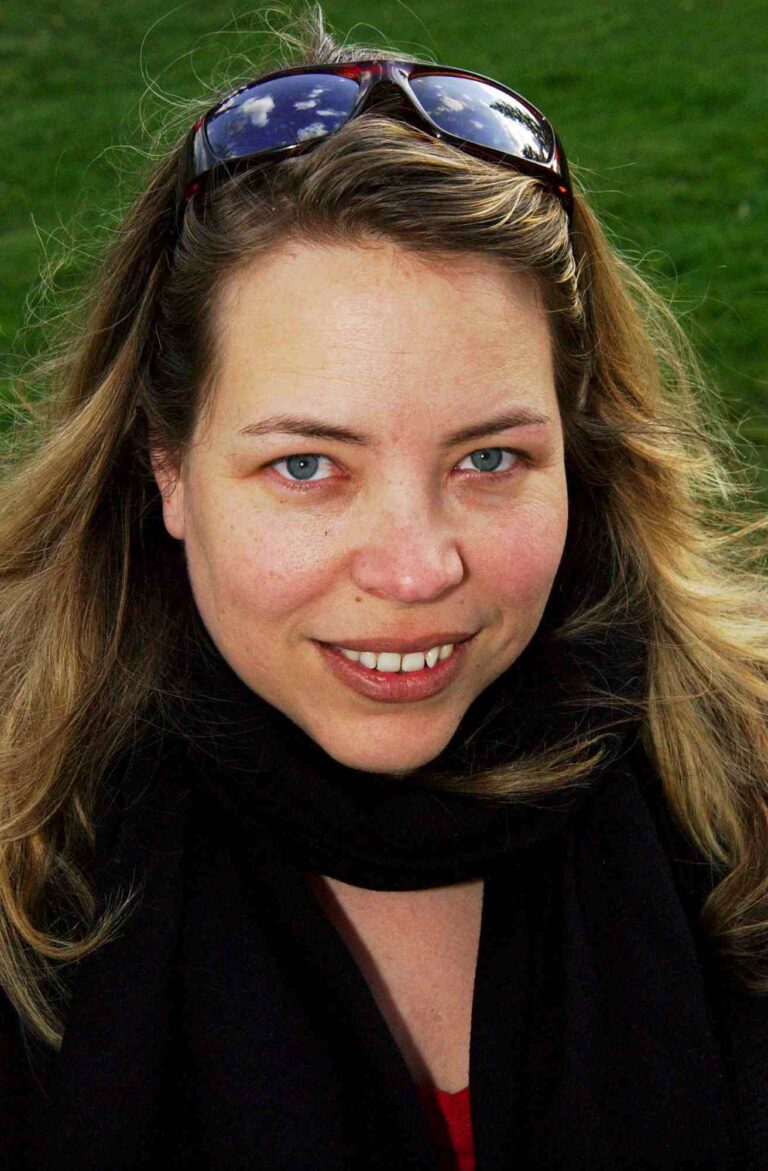The Books We Teach #4: Interview with Christine Schutt
The Books We Teach series will feature primary, secondary, and post-secondary educators and their thoughts about literature in the face of an evolving classroom. Posts will highlight literary innovations in teaching, contemporary literature’s place in pedagogy, and the books that writers teach. In the spirit of educational dynamism, we encourage readers to contribute their thoughts in the comments section.

Christine Schutt is the author of two story collections and three novels. Schutt’s first novel, Florida,was a finalist for the 2004 National Book Award and her second novel, All Souls, was a finalist for the 2009 Pulitzer Prize in fiction. Her most recent novel, Prosperous Friends (Grove/Atlantic, 2012), was described by The New York Times Book Review as “shot through with [Virginia] Woolf’s lyrical, restless spirit.” She is a Pushcart Prize winner, O. Henry Award recipient, Guggenheim fellow, and senior editor at NOON. All the while, Schutt teaches high school English at The Nightingale-Bamford School in New York City, and has taught writing at Barnard College, Bennington College, Columbia University, Hollins University, Sarah Lawrence College, Syracuse University, UC Irvine, University of Massachusetts-Amherst, and the Sewanee Writers’ Conference.
Here, Christine chats with me about her go-to high school creative writing exercises, the challenges and excitements she faces as a secondary educator, and her varied experiences teaching high schoolers, undergraduates, and graduate students.
Erinrose Mager: Tell me a bit about the classes you taught at Nightingale-Bamford this past fall and what teaching you did at Syracuse this spring as part of the 2013 Raymond Carver Reading Series.
Christine Schutt: The fall semester at Nightingale-Bamford involves teaching two sections of senior English, with a reading list of mixed genres: Othello; As I Lay Dying; A Streetcar Named Desire; Hedda Gabler; and eight poets, among them, Roethke, Lowell, Bishop, Merrill, Plath. My third class is an eleventh-grade writing course. A novel by a non-English-speaking writer begins the course. Last year, we read Daniyal Mueenuddin’s In Other Rooms, Other Wonders. Six weeks are spent writing essays with the use of classic models (Orwell, Baldwin) and contemporary writers (Sedaris, Didion, Foster-Wallace).
I led a writing workshop at Syracuse University this spring, though I did bring in stories by James Salter, Lydia Davis, John Gardner, Leonard Michaels, and Barry Hannah as examples of techniques.
Next spring, I teach a seminar of my own devising at Columbia University in the MFA program, and I am thinking of a novella course. The last seminar I taught at Columbia was called “Make It New” and included the following fictions: Harold Brodkey, Stories in an Almost Classical Mode; Elizabeth Hardwick, Sleepless Nights; A.L. Kennedy, Paradise; William Maxwell, So Long, See You Tomorrow; Cormac McCarthy, Child of God; David Mitchell, Cloud Atlas; Michael Ondaatje, Coming Through Slaughter; Mary Robison, Why Did I Ever; W.G. Sebald, The Rings of Saturn; Marianne Wiggins, John Dollar.
EM: You teach at upper school, undergraduate, and graduate levels. How do these experiences differ from one other?
CS: Teaching eleventh- and twelfth-grade English is a more strenuous experience. In the first place, classes meet three times a week, which requires planning and breaking up the text into readable, teachable chunks, and not, as with the graduate-level seminars, meeting once a week for three hours of discussion on a book read in its entirety. Classes tend to be larger in the high school, on average 15 to 18 students, with a broader range of abilities, so that discussion must be pitched to interest the advanced while accessible to the average.
I have taught undergraduate electives only at Barnard, where the range of student is not as broad and reflects the college’s reputation as a home for future writers. Moreover, the choice to take a introductory fiction writing course has been the student’s so that interest is almost guaranteed, all of which makes for an easier teaching experience.
At both high school and undergraduate levels, students tend to be more open to new literary models and less jaded or combative than graduate students. They more readily embrace new writers. Graduate students tend to be more critical readers and a real risk is confronting their disappointment in a writer whose work I admire. (Few love Elizabeth Hardwick’s prose as do I.) MFA teaching involves students at different ages and stages of life—some forty and older—with different majors from different universities. All that binds them is an ambition to write fiction, which is great, but without a shared reading background, one cannot assume that references to certain central texts will have meaning for everyone in the room.
At Nightingale-Bamford, on the other hand, every girl will have read at least four Shakespeare plays by the time she reaches eleventh grade, so that conversation about Desdemona can include references to some of Shakespeare’s other female characters—Lady Macbeth, Juliet, Rosalind, Olivia and Viola. There is pleasure to be had when all in the room can compare and contrast the same books.
What appeals to me across the board is the possibility of introducing a book that forever marks another’s life. To do as much is a promise of my marking the life, too. In a long-ago class of mine at Nightingale-Bamford, the writer Amina Gautier first read Stanley Elkin’s “Poetics for Bullies.” And as writers sometimes do, Gautier has since written a response to the Elkin story, which she read last summer at the Sewanee Writers’ Conference.
Every high school English department is different, but at Nightingale-Bamford I have always been able to bring in whatever contemporary fiction is of interest to me, which sometimes means the latest story in one of the magazines still publishing good fiction. I have taught work by Denis Johnson, Cormac McCarthy, Walter Abish, W.G. Sebald, Ali Smith, Jayne Anne Phillips, Amy Hempel, Lydia Davis, Ben Marcus, and Diane Williams at the high school level. Five of the six upper school English teachers at Nightingale-Bamford are writers, which explains the department’s embrace of contemporary work.
EM: What are some creative writing exercises that you use with your students at Nightingale-Bamford?
CS: Start with Thingy-ness. To teach the use of objects over abstractions, I have students read “The Things They Carried.” Students are then assigned to open someone’s closet, purse, drawer, and empty it to make a character. The writer hazards sounding fatuous or sentimental with overuse of abstractions, but on occasion may indulge in them as does Tim O’Brien: “They carried the sky… They carried shameful memories.”
The poem version of this lesson is to model a poem after Thomas Lux’s “Refrigerator.” Write at least twelve lines of purely surface description of an object until the kicker last line, which must go over the top and be wildly abstract. Elizabeth Bishop’s “The Fish” is an example of figurative use of language that yet stays on the surface, the comparison “of the coarse white flesh packed in like feathers.” An abstraction coupled with an object produces another effect: “Hope is the thing with feathers.”
To teach anaphora, repetition, and pattern in fiction, students have read Rick Moody’s “Boys,” Jamaica Kincaid’s “Girl,” and Susan Minot’s “Lust.” One assignment is to write an imitation of Kincaid’s story, with the student as narrator occasionally asserting herself when confronted with instructions from some higher power—mother, teacher, institution, fashion.
To teach dialogue, students may read Denis Johnson’s “Emergency” and then write a scene largely managed in dialogue between two characters.
In my writing class I stress the importance of nouns and verbs, the usefulness of repetition (no matter what teachers have said before about “variety”), the reader-friendly use of nouns over pronouns (so that the reader need not hunt for the antecedent), high and low diction, and the effect of mixing it up. (Of course, pronouns can be used with smashing results. When the body is reduced to it, for example.) We play the editing game: If I can say in three words what took you ten, I win. Finally, composition of one unimpeachable sentence in work of any length should be considered a victory.
Longer writing assignments include writing about yourself as you imagine someone else sees you—aunt, friend, teacher, dog—from first-person point of view; two characters should emerge in this lesson. Take up a family photograph and describe it; consider who is missing or blurred; address someone in the photograph. “In Dreams Begin Responsibilities” is sometimes read as an example of speaking to the powerful missing, those figures who are out of hearing—out of life!—and yet not. Such assignments to do with photographs or paintings tend to yield the most successful responses.
EM: Sometimes I feel like the toughest (but also most rewarding) challenge as a secondary educator is encouraging students to get excited about language. What are some exercises that you use in your classes to underscore the importance of language?
CS: We talk about how words look on the page. We talk about favorite and repeated letters and words. We read Emily Dickinson and admire all of her o’s. Robert Lowell’s strings of adjectives are great for appearance and sound, as from “Epilogue,” when everything he writes “seems a snapshot/ lurid, rapid, garish, grouped.” We talk about hard sounds and soft sounds and how they are made. What makes one sentence more satisfying to read than another?
A useful exercise in close reading involves finding the sentence that drives any short story. This sentence, somewhere in the opening paragraph, is often the odder sentence—different diction, tone, syntax; such a sentence can be found in the Leonard Michaels’s story “Murderers,” which is a story I use at every level. So much can be learned from it. “I wanted proximity to darkness, strangeness” applies to every narrative move in the fiction. And to discover this makes an impression—admittedly, a greater impression on graduate students than on high school girls, who tend to be impressed by the rabbi’s shuddering cock.
EM: Could you talk to me a little about a text that elicited a wholly (or mostly) positive response from your students? What about this text caused such collective enthusiasm, do you think?
CS: An odder experience in terms of student response to a text happened with As I Lay Dying, a novel that has always received mixed reviews until the class of 2012. They loved the novel so much that seven of them came to school in costume on Halloween as the Bundren family. (Being witness to this tradition, among many others, is one other difference between the teaching experience at the high school and college levels.)
But how to explain what excites young readers? Accessibility (usually—see: Faulkner) helps. Stories with at least one character around their age is another charge. Funny or sad—and distinctly so—packs a wallop. “Sea Oak,” by George Saunders, has all these elements and hits at every level. So too do Aimee Bender’s stories “The End of the Line” and “Ironhead.”
EM: Talk to me a bit about the process of writing Prosperous Friends. Is Prosperous Friends a project completely disparate from your teaching life, or do your books and classrooms bleed into each other?
CS: All of my novels are projects undertaken without thinking of myself as a teacher. Simply, what I teach, I practice as a writer. Books, musical lines, and words discovered in or out of the classroom figure into my fiction. In Prosperous Friends one of the characters, Dinah, is a poet and makes “patchwork” poems out of lines from Ginsberg and Lowell. Andrew Marvell is quoted as are lines from The Seagull and As You Like It. What I have read and learned from, read and loved, either as a teacher or writer, I make use of in my own fiction.


